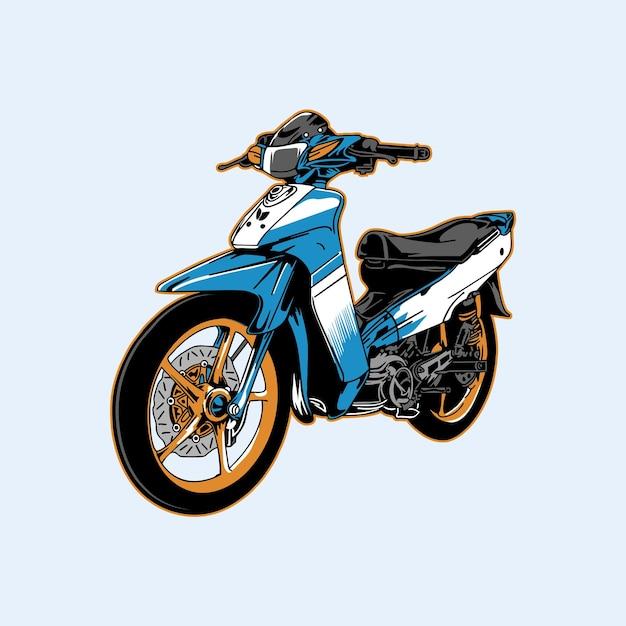As dirt bike enthusiasts, we can’t help but get nostalgic thinking about the good old days of two-stroke engines dominating the off-road scene. Honda, one of the leading manufacturers in the industry, made a significant impact with their 2-stroke dirt bikes for many years. However, in recent times, you may have noticed the disappearance of these legendary machines from Honda’s lineup. So, what led to Honda’s decision to stop making 2-strokes?
In this blog post, we’ll delve into the reasons behind Honda’s transition to four-stroke engines and explore the factors that influenced their departure from the 2-stroke realm. We’ll also address some frequently asked questions like the last two-stroke Honda ever made, the possibility of their comeback, and the current status of 2-stroke vs. 4-stroke preferences among riders. So saddle up, and let’s embark on a journey through the evolution of Honda dirt bikes and the story behind their shift away from 2-strokes.

Why Honda Gave Up the Two-Stroke Game
During the golden days of motocross, the sound of a two-stroke engine brought excitement to the hearts of riders and spectators alike. Two-strokes revved high and sounded like angry bees, delivering blistering acceleration and thrilling power. So why did Honda, one of the leading motorcycle manufacturers, leave the two-stroke realm behind? Let’s dive into the story and uncover the mysteries behind Honda’s decision.
The Rise of Environmental Concerns
In the 1970s, the world began to wake up to the harmful effects of pollution. As governments worldwide started imposing stricter regulations on vehicle emissions, motorcycle manufacturers faced a difficult challenge: How could they reconcile the exhilaration of two-strokes with the pressing need for cleaner and greener machines?
Enter the Four-Stroke Revolution
Honda, known for its engineering prowess and innovation, saw an opportunity to lead the industry in environmental responsibility. In the early 1980s, they shifted their focus towards developing and refining four-stroke engines. These powerhouses boasted greater fuel efficiency and drastically reduced emissions compared to their two-stroke counterparts.
The Quest for Power and Reliability
While two-strokes had their charm, they also had their drawbacks. Maintaining them required meticulous attention to the delicate balance of oil and fuel mixtures. Two-strokes were notorious for their thirst, often consuming oil at alarming rates. Additionally, their engine design left them more prone to mechanical failures.
Honda recognized that riders demanded both power and reliability. By embracing four-stroke technology, they could provide motorcycles that offered smoother power delivery, increased torque, and improved durability while still maintaining an exhilarating riding experience.
The Battle for Rider Preference
As motorcycling technology evolved, the market started to favor four-strokes due to their enhanced performance and reduced environmental impact. Riders found solace in the fact that their four-stroke machines no longer clouded the trails with puffs of blue smoke, making them more socially acceptable. With riders shifting their preferences towards cleaner and more reliable motorcycles, Honda made the strategic decision to fully embrace the four-stroke revolution.
Adapting to Changing Tides
Honda, always attuned to market trends and customer demands, recognized that the future of motorcycles lay in four-stroke engines. As the years rolled by, they continued to pour resources into refining their four-stroke technology, further bolstering their position as an industry leader.
Farewell to the Bees
And thus, the two-stroke era gradually faded away. The distinctive sound of those buzzing engines became a memory of a bygone era, replaced by the refined growl of four-stroke powerhouses. Honda’s move to abandon two-strokes was not only a strategic business decision but also a reflection of their commitment to environmental stewardship and delivering exhilarating riding experiences that align with modern sensibilities.
So, next time you hear the sound of a four-stroke motorcycle thundering in the distance, tip your helmet to Honda and their unwavering pursuit of progress. The legacy of the two-stroke may live on in our hearts, but Honda’s dedication to pushing the boundaries of motorcycle engineering continues to shape the future of the industry.

FAQ: Why did Honda stop making 2 strokes
In the world of dirt biking, the debate between 2-strokes and 4-strokes has caused quite a stir. While 4-strokes have taken over the market, the disappearance of 2-stroke engines from major manufacturers like Honda has left enthusiasts wondering why. So, let’s dive into the frequently asked questions surrounding Honda’s decision to cease production of 2-stroke dirt bikes.
What is the world’s fastest dirt bike
Currently, the title of the world’s fastest dirt bike goes to the KTM 450 SX-F. With its powerful 4-stroke engine, this beast can reach staggering speeds of up to 123 mph. However, it’s worth noting that speed isn’t the only factor that determines the greatness of a dirt bike.
What was the last 2-stroke Honda made
The last 2-stroke dirt bike produced by Honda was the iconic Honda CR500. This legendary machine ceased production back in 2001. The CR500 was revered for its incredible power and thrilling riding experience.
Are 2-strokes allowed in Supercross
No, 2-strokes are not allowed in professional Supercross racing anymore. Starting from 2006, the AMA Supercross made a rule change, allowing only 4-stroke engines to compete in the premier 450cc class. This change aimed to address concerns about noise and exhaust emissions.
Do they make 450 2-strokes
No, major manufacturers like Honda, Yamaha, Kawasaki, and Suzuki no longer produce 450cc 2-stroke dirt bikes. The popularity and dominance of 4-stroke engines in the market have pushed these companies to focus solely on their 4-stroke models.
What manufacturers still make 2-stroke dirt bikes
While most major manufacturers have moved away from producing 2-stroke dirt bikes, a few companies have continued to cater to the 2-stroke enthusiasts. Brands such as KTM, Husqvarna, Beta, and GasGas still offer a range of 2-stroke models, ensuring that the legacy of 2-strokes lives on.
Did Yamaha ever stop making 2-strokes
Yes, Yamaha ceased production of their 2-stroke dirt bikes in 2007, joining other manufacturers in embracing the 4-stroke revolution. However, Yamaha’s decision didn’t dampen the spirits of 2-stroke enthusiasts, as other brands continued to cater to their needs.
Will Honda ever bring back 2-strokes
While it’s always tempting to speculate about the future, there is currently no official information to suggest that Honda is planning a comeback for 2-stroke dirt bikes. As of now, Honda seems committed to their line of reliable and high-performance 4-stroke models.
Who makes the best two-stroke dirt bikes
Opinions may vary, but when it comes to 2-stroke dirt bikes, brands like KTM, Husqvarna, Beta, and GasGas are often cited as top contenders. These manufacturers have perfected the art of blending power, handling, and durability to create exceptional 2-stroke machines.
Why did they stop making 2-strokes
There were several reasons behind the decision to discontinue 2-stroke production. One significant factor was the tightening emission standards enforced worldwide. 4-stroke engines were seen as a cleaner and more environmentally friendly alternative. Additionally, advances in technology allowed 4-strokes to equal or even surpass the power and performance of 2-strokes. The market demand for 4-strokes also played a role in manufacturers shifting their focus away from 2-strokes.
What was the last year Honda made a CR500
The Honda CR500, considered one of the most iconic 2-stroke dirt bikes, had its final production year in 2001. Since then, 2-stroke enthusiasts have cherished the CR500 as a legendary and sought-after machine.
When did Honda stop making the CR250
Honda discontinued the production of the CR250, another legendary 2-stroke dirt bike, in 2007. The loss of the CR250 was a significant blow to the 2-stroke community, as it was renowned for its power and agility.
Are Honda 2-strokes coming back
As of now, there is no official information indicating that Honda plans to reintroduce 2-stroke dirt bikes into their lineup. However, the future is always filled with possibilities, so who knows what surprises might be in store for us down the line?
Will 2-stroke bikes be banned
While it’s impossible to predict the future with certainty, there is no widespread ban in place or imminent danger of a ban on 2-stroke bikes. However, it’s worth noting that emission regulations and evolving environmental concerns might continue to shape the landscape of the motorcycle industry.
What is the most powerful 2-stroke engine
In the realm of 2-stroke engines, the KTM 300 XC-W TPI (Transfer Port Injection) stands out as one of the most powerful. With its innovative fuel injection system and cutting-edge technology, it delivers exceptional power and torque, providing riders with an exhilarating experience.
Why are 2-strokes so loud
The distinctive sound of a 2-stroke engine is due to the combustion process itself. Unlike 4-strokes, which have separate intake and exhaust strokes, 2-strokes combine both processes into a single stroke. This results in a quicker exhaust pulse, producing the characteristic loud, high-pitched exhaust note that enthusiasts have grown to love.
What 2-strokes did Honda make
Over the years, Honda produced a range of legendary 2-stroke dirt bikes. Some notable models include the Honda CR500, CR250, CR125, CR80, and CR60. These machines became synonymous with power, performance, and sheer excitement.
When did Suzuki stop making 2-strokes
Suzuki, like other major manufacturers, shifted their focus away from 2-stroke dirt bikes in favor of 4-strokes. The discontinuation of their 2-stroke production occurred in 2008. However, Suzuki continues to cater to dirt bike enthusiasts with their line of high-quality 4-stroke models.
When did Honda last make a 2-stroke dirt bike
Honda’s last production year for 2-stroke dirt bikes was in 2007. After that, they decided to concentrate on the development and refinement of their highly successful 4-stroke models, marking the end of an era for Honda’s 2-stroke enthusiasts.
Are 4-strokes better than 2-strokes
The debate between 4-strokes and 2-strokes is a contentious one, with both sides having their ardent supporters. While 4-strokes are generally favored for their smooth power delivery, better fuel efficiency, and reduced emissions, 2-strokes are celebrated for their lightweight, snappy power, and unmatched exhilaration. Ultimately, the better choice depends on individual preferences and riding styles.
When did Kawasaki stop making 125
Kawasaki stopped producing their 125cc 2-stroke dirt bike, the KX125, after the 2008 model year. The discontinuation of the KX125 was another testament to the decline of 2-stroke models in the industry as a whole.
Why is Suzuki not in Supercross
Suzuki’s absence from Supercross racing in recent years is due to a decision the company made. While exact reasons may vary, it’s important to note that Suzuki continues to compete in other forms of motorcycle racing, such as Motocross and Superbike championships.
Does Kawasaki still make the KX125
No, Kawasaki discontinued the production of the KX125 after the 2008 model year. Since then, Kawasaki has shifted their focus towards their lineup of powerful and reliable 4-stroke dirt bikes, catering to the demands of modern riders.
Do Honda still make 2-strokes
No, Honda ceased production of 2-stroke dirt bikes in 2007. Since then, Honda has chosen to concentrate on developing their highly successful line of 4-stroke models, offering riders a combination of power, reliability, and technological advancements.
Conclusion
While the disappearance of 2-stroke dirt bikes from major manufacturers like Honda may have left some riders nostalgic, it’s essential to embrace the ever-evolving nature of the motorcycle industry. Advances in technology, emission regulations, and market demands have led manufacturers to focus primarily on 4-stroke models. Luckily, a few brands still cater to the 2-stroke enthusiasts, ensuring that the thrill and excitement of riding on the edge will always have a place in the world of dirt biking.